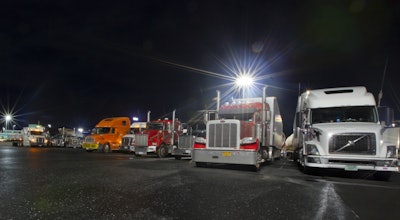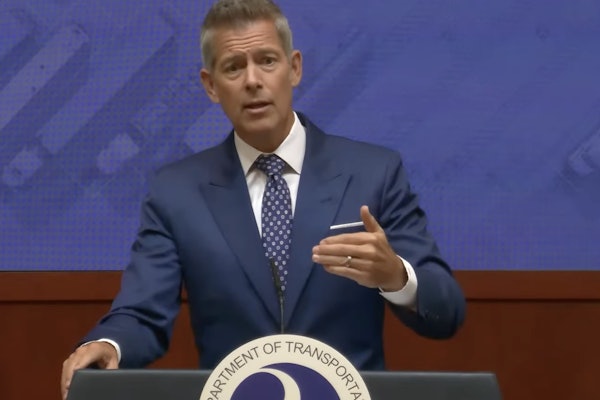
On Aug. 23, the Federal Motor Carrier Safety Administration published an Advance Notice of Proposed Rulemaking seeking public comment on four specific aspects of the Hours of Service rules. The agency is considering several possible changes to:
- the short- haul hours of service limit
- the hours of service exception for adverse driving conditions
- the 30-minute rest break provision
- the sleeper berth rule to allow drivers to split their required time in the sleeper berth.
The FMCSA also requested comments on petitions from the Owner-Operator Independent Drivers Association and TruckerNation.org. Here is a modest sampling of the more than 3,100 comments posted online.
Christopher Pritzl, Reedsville, Wisconsin:
I would like to extend my opinion in favor of reforming the HOS for trucking companies. We need more flexibility to contend with unforeseen situations that will arise throughout the course of any particular day. I would be in favor of the ability to split the 14 hour day up with off-duty time because of the occasional extended periods at the shipper or receiver. This leads to unsafe driving due to hours running out. The 30-minute break is also unnecessary because of the breaks taken already throughout a normal day. I have found myself parked on a busy city street due to heavy traffic, but my 30-minute break was due causing an unsafe situation. A 10-minute drive would have gotten me to a truck stop and safely parked.
Luis Garcia, Mobile, Alabama:
The 30-minute break before reaching the eighth hour of coming on duty should exclude operations where drivers do not ever drive more than five hours in any continuous driving event. In a drayage operation, where drivers pick up at ports and railroads, sometimes waiting for up to an hour for a chassis and/or container, that driver can start/stop three, four, five or sometimes more in an eight-hour on-duty period, but only drive around three to five hours. Requiring that driver to stop for 30 minutes during this stop and go operation does not alleviate the fatigue factor, or contribute to a safer work day by requiring that driver to take a rest break. The driver has taken several “rest” breaks during the course of waiting at the port or rail, or at the consignee.
Kevin Mahaffey:
In my opinion, getting rid of the 30-minute break will help. I have found that I have to rush on some of my loads to get them delivered on time when I have to either take the 30-minute break or get to my stop before needing the 30-minute break. This break is sometimes challenging when I get stuck in traffic for whatever reason. I also think that we need the split sleeper so I can stop to take a nap when I am tired so I don’t have to drive fatigued. I drive Texas regional so I am constantly driving through Dallas or Houston. The way the rules are now I get stuck driving during rush hour traffic when I would rather stop and wait for a few hours for traffic to subside. Thank you for your consideration in these matters.
Kyle Andreae, North Las Vegas, Nevada:
I am 28 years old and I (am a) team driver with my partner and both have been driving for 2-3 years each. I come to you with a perspective of only ever knowing elections logging devices. I only have one complaint since my other was addressed with the recent change of personal use. Allowing us to find parking, as I’m sure we all know or heard, can be a challenge. My complaint is addressed at the following 70-hour rule. In no other industry are we limited on our ability to earn a living except perhaps pilots. The 70-hour rule which only allows us to work 70 hours per seven days cost me even as a team driver thousands in potential earned income. Not only does this rule cost me money but it often leads to me having to sit at a truck stop away from home for 34 hours unpaid. Now I am not sure how many of you have been to truck stops across the country but (they’re) not somewhere you want to spend your Sunday afternoon. I really hope you consider the daily limits do ensure we are safe drivers and are getting enough sleep. Why make me sit unpaid and unproductive for 34 hours every week? I used to work almost a third longer with three jobs before I started trucking. It’s time to end any weekly limits and focus on the daily safety. I much prefer to take days off at home.
Todd Eggers, Ellsworth, Michigan:
I like the idea of eliminating the 30-minute rest break. In my operation, I am required to take this break in my customer’s driveway then drive less than 30 minutes for my meal break. It would be much more beneficial to just take the meal break. The split sleeper provision will not affect my operation much but I am not opposed to it. I like the 14 hours on and 10 off but would like the ability to choose to drive the entire 14 hours less the time it would take to do a pre/post trip inspection and meal break. I also would like to see a 70 hours in seven days rule coupled with the 34-hour restart.
Richard Bobbittle, Fredericksburg, Virginia:
I have been a truck owner and driver for 27 years now. I would like to see some flexibility in the 14-hour rule. At 56 years old I don’t even want to drive 11 hours in a day anymore. In my Northeast regional operation, I would like to be able to stop the 14-hour clock and take two to three hours off duty or sleeper berth to get out of traffic and rest and then complete about eight to 10 hours of driving if needed. I would also like the flexibility to stop the 14-hour clock while waiting at a shipper or receiver during excessive detention situations. This would allow us to get to a safe parking area such as a rest area or a truck stop without being in violation.
Chip Harding, Twin Falls, Idaho:
I feel strongly that the FMCSA should add split sleeper berth flexibility to hours regs. This will allow professional drivers to use their own best judgment in operating safely while continuing their mission of moving America’s freight in a timely and efficient manner. I have been driving for over 40 years. I have driven in more unsafe conditions than I ever have before since the 14-hour rule came into effect. Since being put on this time clock I have been forced to drive in rush hour traffic many times. A driver should be able to split his sleeper berth time any way he or she feels is the safest and most efficient way.
Laurence Reinke, West Allis, Wisconsin:
I feel that doing away with the 30-minute rule would do some good, there are times that I’m not tired and then have to sit for no reason at all, and at times that 30 minutes will put a driver into a rush hour situation, a split sleeper might help in some situations but with me I need at least an 8-hour rest. Taking an extra two hours to wait for a rush hour to clear should work.
Oswaldo Flores, Garden Grove, California:
Having been in the industry for 15+ years and seeing the adoption of electronic logging solutions has definitely “shaken” the (hours of service) tree and believe this in turn has opened the eyes of the transportation industry to the potential issues and misunderstandings on the interpretation, usage of hours of service and how they pertain to drivers, carriers. A revision of the (hours of service) in the era of electronic data collection is required to keep up with modern times and real-world scenarios going forward.
William Gadd, Thomasville, Georgia
Flexibility is the answer. Driver choice is the question. Make the rules we have always had them; give the driver the choice to be flexible. In 35 years of commercial driving I’ve always been told I am the decision maker — drive, sleep, keep my schedule. Under the current rules, (I) drive or I don’t get the work done. We always have rules let the driver choose how and when and still get the work done. This is not a 9-5 job, trying to make it one won’t work.
Jamie Riddle, Willis, Michigan:
I have been a driver for 14 years and with the new ELD mandate, it makes things particularly difficult for drivers now. Paper logs were in 15-minute increments whereas ELD’s go by the minute or even second, so there was a little flexibility if we happened to run into some traffic and would be a couple minutes beyond our 11 or 14. With ELDs now, if you’re not stopped by the minute your hours are up, you get flagged for a violation. Companies are now using this against drivers which affect their employment and it leaves no room for flexibility with a DOT officer. There should be a way to mark down inclement (weather) conditions and not have it count even one second over as a violation. As a former team driver, completing your hours in a day was a lot easier when my team driver and I would split our break in five-five and a half hour increments and the 11 hours of driving didn’t drag out as bad as you would feel less fatigued. We ran like this for months when we legally could and always felt more refreshed when only running in smaller increments such as five-five and a half hours then resting. There is more of a need for practicality of HOS rules. People who have never stepped foot behind the wheel of a truck and spent life on (the) road are making rules and in part try to base them on what they feel sounds good or try to base it off people who normally work a 9-5 job. Trucking is a 24/7 job and we live our life on the road, the people who make the laws should have to experience it before they can make a law or rule about it.
Jeff Watson, Thomasville, North Carolina
I believe that the 30-minute break should be removed. I generally stop once or twice in the first four hours of work, just not for 30 minutes, only long enough for me to get fuel or coffee. As for the split sleeper, I feel some carriers will abuse it while the driver is at a customer not sleeping even if logged as sleeper time. Then, later on, getting a short sleeper period and driving tired. Leave the 14-hour rule in place.
Timothy Welter, Sheridan, Wyoming:
The hours of service rules as they stand are great if the shippers and receivers all were consistent with our loading and unloading. However, it is very common when you get there they run you into your rest period and then you need to creep to a safe rest area to finish your 10-hour reset. This is very disruptive sleep and not restful at all so when you start the next day you are forced to follow the said hours of service whether you are rested or not. This makes us drive even beyond the safe operation of the tractor many times. I think the hours of service should be flexible enough to allow a driver to rest when he or she feels tired. When a driver is resting or sleeping the 14-hour clock and or the 11-hour clock should stop and continue where it was upon resuming driving. This would allow drivers the flexibility of rest/drive and still stay within a reasonable (hours of service) standard. It was before my time but I believe pre-1980 the (hours of service rule) was this way and the hours weren’t as demanding to stay moving all the time.
James Grubb, Atkins, Virginia:
This month marks 43 years that I have been driving. In that time I’ve seen numerous changes in our industry, some good (equipment) and some not so good (changing rules on HOS). I believe that the inflexibility of the current rules cause drivers to run faster, have to look harder for parking and puts unneeded stress on a driver to stay within the law. The old system (10 on, right off) allowed a person to rest if and when needed if only for a few hours, without having to set for the full time. (It) Allowed him to wait for rush hour traffic, wrecks and other obstacles to clear and allow him to safely proceed to his destination without fear of violating the 14-hour limit. The split sleeper would allow safer rest periods, plus allow partial rest breaks to apply to sleeper time while waiting for dispatch,repairs,road closures,times for loading or unloading to approach. As an example, if I get up at 6 a.m., do my pretrip and get a cup of coffee to go, then drive 15 miles to deliver my load that has to be there at 7 a.m., (take) 30 minutes to unload, call dispatch, then sit for three hours (until) dispatched. Drive two hours to the shipper, sit three hours, while loading. I only have a few hours. left to work until I’m forced to stop for the evening. Without the 14 hour rule and allowing for split sleeper as it was before the changes, I could have taken a rest period and still had extra time to safely drive to my destination, without fear of finding a jammed up parking lot that would have been filled by 6 or 7 p.m. Parking has always been a major concern, especially in metro areas. But that problem has been exacerbated recently by rest area closures, increased truck traffic, truck parking restrictions by shippers and receivers, but mostly by the 14-hour rule. A return to the old rules with enforcement by ELD’s would, in my opinion, clear up most of the problems we now have. Greater productivity by each driver and truck would lessen the need for more drivers, trucks, parking spaces. (There would also be) Less traffic and pollution. If having to choose between safe or legal. I choose safety.









